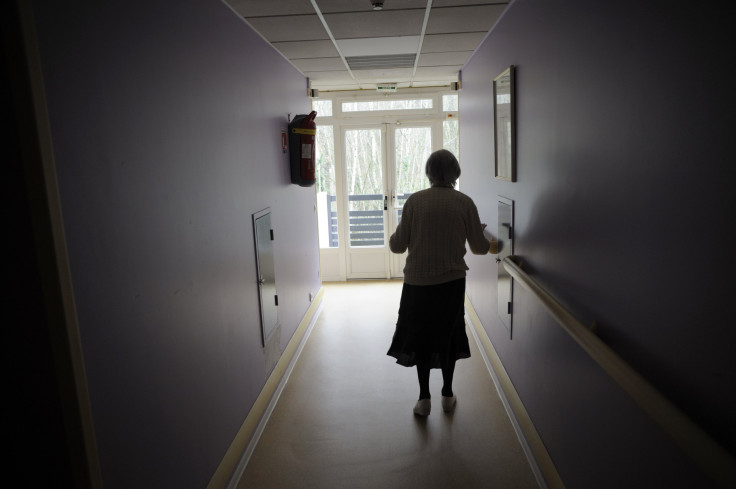Alzheimer’s Disease: Eye Test For Early Detection To Undergo Human Trials

The first human trial in an experimental eye test for Alzheimer’s disease is set to commence as early as this month, according to a recently published research in the journal Investigative Ophthalmology & Visual Science. The experiment, first tested on mice, could allow patients to preempt the onset of neurological damage and provide suitable treatment, if successful.
A study published Wednesday in the journal Neurology showed the changes associated with the disease can be detected as early as childhood in cases that are genetically at risk. There are about 7.5 million new cases of Alzheimer’s diagnosed around the world annually — about 5 million people in the United States currently suffer from the disease.
The degenerative disease, which causes acute problems with memory, thinking ability and behavior, has claimed 1 in 3 senior citizens with some form of dementia in the U.S.
Scientists from the University of Minnesota joined CytoViva, an Alabama-based imaging technology company, to put together a noninvasive diagnostic device that attempts to detect the earliest stages of Alzheimer’s before any physical symptoms appear, the Medical Daily reported.
At the early stages of the disease, it is a challenge to locate the abnormally formed brain proteins — amyloid beta and tau — that signal the onset of Alzheimer’s. A delay in the ability to locate these leads to them forming plaques and tangles, killing neurons.
The regular way to confirm Alzheimer’s is an examination of the brain after the person’s death. However, the author of the study, Swati More of the university’s Center for Drug Design (CDD), reportedly said: “The retina of the eye is not just ‘connected’ to the brain — it is part of the central nervous system,” theorizing that the eye has the ability to provide easier access to the brain, and hence, the disease’s progression.
While testing mice — those bred to develop Alzheimer’s as compared to control mice — patterns developed before the onset of any symptoms. “We saw changes in the retinas of Alzheimer’s mice before the typical age at which neurological signs are observed,” the Medical Daily quoted More as saying. “The results are close to our best-case scenario for outcomes of this project.”
Currently recruiting human volunteers — both healthy and with Alzheimer’s — the university is set to go in for the Phase 1 clinical trial and find distinct retina patterns between the two groups, without the use of anesthesia that was necessary for the mice.
Robert Vince, co-author and fellow colleague at CDD, reportedly said: “First, effective treatments need to be administered well before patients show actual neurological signs.”
“Second, since there are no available early detection techniques, drugs currently cannot be tested to determine if they are effective against early Alzheimer’s disease. An early diagnostic tool like ours could help the development of drugs as well,” Vince added.
The study regarding the experiments comes at the same time as researchers at the Institute of Molecular Medicine, the University of California and Australia's Flinders University said they were closing in on developing a vaccine within the next five years that could prevent and possibly reverse the effects of dementia and Alzheimer’s in a “breakthrough discovery.”
© Copyright IBTimes 2024. All rights reserved.












